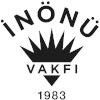Coming to see the armistice negotiations in 1922, Ernest Hemingway describes Mudania as “the coast town where the occidentals came to beg for peace”.
Mudania is the place where on the 11th of October in 1922 the Grand National Assembly of Turkey Government and allied powers signed the truce which ended the Turkish-Greek war and won the victory in politics against the occupation forces.
The museum building where the Western Front Commander İsmet Pasha represented GNAT Government, General Harrington represented England; General Charpy represented France and General Mombelli Italia in the negotiations, belonged to the tradesman Alexander Ganyanof of Russian origin and was later bought and restored by the businessman (Sugar King) Hayri İpar. The building was transformed into a museum under the direction of Mudanya Municipality in 1937. It was assigned to the General Directorate of Ancient Arts in 1959.
Except for the basement floor and attic, it is a duplex wooden house. It has the characteristics of the late 19th century architecture. Building’s available square meterage is 400 square meters and the total area of the lot is 800 square meters. It has 13 rooms and 2 big halls. On the first floor there is the hall in which the armistice was signed as well as the study of İsmet Inonu who represented Turkey in the armistice talks and on upstairs the bedrooms of İsmet Pasha and of his assistants are located. In the study of İsmet Pasha, the marble table which was broken in half by İsmet Pasha who punched the table saying “We’ll fight if need be!” when he saw his conditions in the armistice were not accepted. In the house in which the stuff belonging to the Armistice period, the photos and documents of that period are also displayed.
Mudania Armistice House Museum’s website: http://www.mudanyamutarekeevi.org






